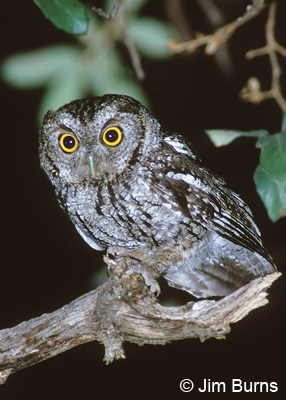
We are in Harshaw Canyon east of Patagonia, Arizona in pine/oak woodland, just above 5000 feet. Harshaw Creek runs bright in the illumination of the waxing moon, almost full. The owl flits over, just inches above our heads, and lands, perhaps twenty feet high, on an exposed snag in stunted oak and begins to call the staccato, “Morse Code” vocalization so familiar and familiarly known as its territorial or advertisement song. It is a Whiskered Screech-Owl, but neither the sighting nor its song is as fascinating as this fact—we were first alerted to the owl’s presence by the sound of its flight.
Conventional wisdom amongst casual birders, and non-birders who delight in spooky things in the night, says that all owls fly silently to avoid flushing potential prey. This byte of conventional wisdom, however, is partially false. The unconventional truth is that some of our nineteen North American owl species are mostly insectivorous, and last time I checked insects did not have ears. The small specialty owls of southeastern Arizona, Whiskered Screech, Elf, and Flammulated, insectivores all, do not have silent flight. But Western Screech-Owls, which slightly overlap the Whiskereds altitudinally and are so closely related to them that ornithologists think they evolved from the same common ancestor, do fly silently. Therein lies the fascination of evolution.
Our owls with silent flight, primarily the larger and deeply nocturnal species (such as Barn, Great Horned, and Great Gray) which prey on rodents, birds, and larger mammals, have special feathering which allows their wings to slip through the air with less wind resistance than conventional bird wings, muffling the sound of their approach. The advantages are that prey does not hear them coming nor does wingsound interfere with their own fine tuned sense of hearing which allows them to aurally locate moving prey in the dark.
This wing feathering adaptation is variously referred to as serrated, fringed, or tattered. The leading edge of the Western Screech-Owl wing, seen in close detail, resembles the cutting edge of a saw. At their trailing edge these feathers thin out and appear shredded. Western Screech-Owls then, as you might expect, are not insectivores, but feed primarily on small rodents.
The Elfs and Flammies, hardly larger than our sparrows, migrate south in winter, apparently because the mountain canyons of southeast Arizona cannot support enough insect biomass to fuel their cold weather survival. Whiskereds, however, are sedentary, moving, if at all, only short distances downslope in winter.
It is February in Harshaw Canyon, and it will be below freezing by tomorrow morning’s first light. We have on stocking caps and thermal long underwear, fingers already gone numb working searchbeam and camera. The Whiskered Screech-Owl currently serenading us from the oak snag is somewhat larger than the migratory Elfs and Flams, but smaller than the non-migratory Western Screech-Owls. It would seem much too cold for insects here, so how and why do Whiskereds survive the winter in this habitat niche?
My next column will attempt to answer these questions and spotlight two physical adaptations which have evolved to make Whiskereds mostly insectivores with no need for the special wing development the silent flyers have.